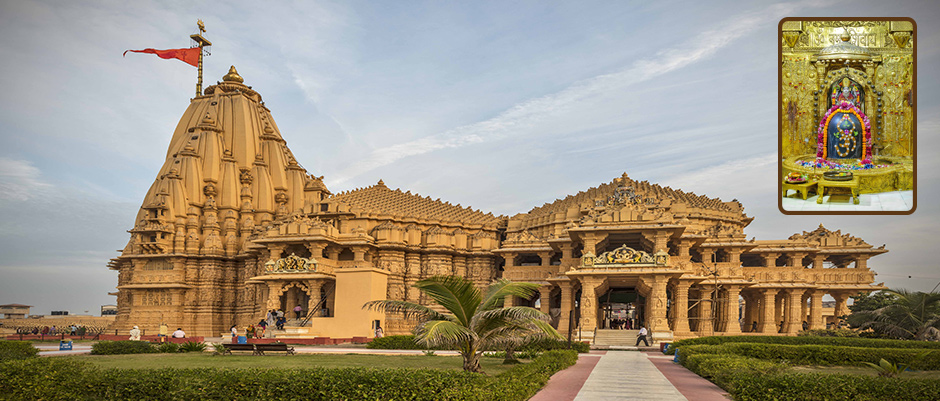
Somnath Temple
Somnath Temple: The Eternal Light of Devotion and Heritage
Among the twelve sacred Jyotirlingas dedicated to Lord Shiva, the Somnath Temple holds the highest reverence. Located in the holy region of Prabhas Kshetra, near the coastal town of Veraval in Gujarat, this age-old temple reflects deep-rooted devotion and the rich spiritual tradition of the land.
The word "Somnath" means "Lord of the Moon," reflecting a deep connection with the legend of Chandra Dev, the Moon God. As described in Puranic lore, Chandra was cursed by his father-in-law Daksha Prajapati for showing partiality to only one of his 27 wives, Rohini. Deprived of his radiance, Chandra undertook severe penance here at Prabhas Teerth. Moved by his devotion, Lord Shiva appeared and restored his brilliance, blessing him with light once again. This divine event marks the spiritual birth of the Somnath Jyotirlinga, where Lord Shiva is worshipped as the liberator from darkness.
This revered temple serves not only as a site for spiritual worship but also as a powerful reminder of India's enduring legacy through the ages. Over the centuries, despite numerous invasions and destruction, the temple has always risen from the ruins—rebuilt with unwavering faith and unshakable resilience. Each reconstruction, from the earliest legends to the modern structure, reflects the strength of the Hindu spirit.
According to ancient texts, the earliest temple at this site is believed to have been crafted in gold by Chandra Dev, the deity of the Moon, as a tribute to Lord Shiva. It is believed to have later been rebuilt in silver by Ravana, in sandalwood by Lord Krishna, and in stone by others through the ages. According to ancient texts like the Skanda Purana, the first consecration of this Jyotirlinga happened in the Treta Yuga, making it a sacred site with mythological antiquity reaching back millions of years.
Modern history remembers the efforts of Sardar Vallabhbhai Patel, who envisioned the restoration of the Somnath temple post-independence. Following his visit to the temple ruins in 1947, reconstruction began under his leadership. The sanctification (Pran-Pratistha) of the newly built temple was performed by the then-President of India, Dr. Rajendra Prasad, on May 11, 1951—a powerful moment of spiritual and national pride.
Apart from the main sanctum, visitors also offer prayers at Shri Kapardi Vinayak and Shri Hanuman Temple within the complex. The nearby Vallabhghat offers a spectacular view of the sunset over the Arabian Sea, adding to the serene atmosphere of the pilgrimage.
Every evening, the temple is beautifully lit, and the “Jay Somnath” Light and Sound Show captures the rich legacy of the temple against the sound of ocean waves, leaving devotees in awe of its spiritual aura.
A short walk away stands the Ahalyabai Temple, constructed in 1782 by Queen Ahalyabai Holkar. It preserved the worship rituals of Lord Shiva even during politically unstable times, serving as a spiritual refuge for devotees.
Somnath Temple is not just a marvel of architecture or a tale from mythology—it is the living soul of devotion, faith, and perseverance. For countless devotees, it remains a place where prayers find their voice, and hearts discover peace in the divine presence of Lord Shiva.
Timing
• Timing for Darshan at Somnath Temple: 6.00 AM to 9.00 PM
• Timing for Aarti: 7.00 AM, 12.00 Noon and 7.00 PM
• "Jay Somnath" Sound and Light Show: 8.00 PM to 9.00 PM
